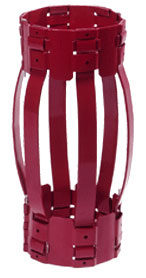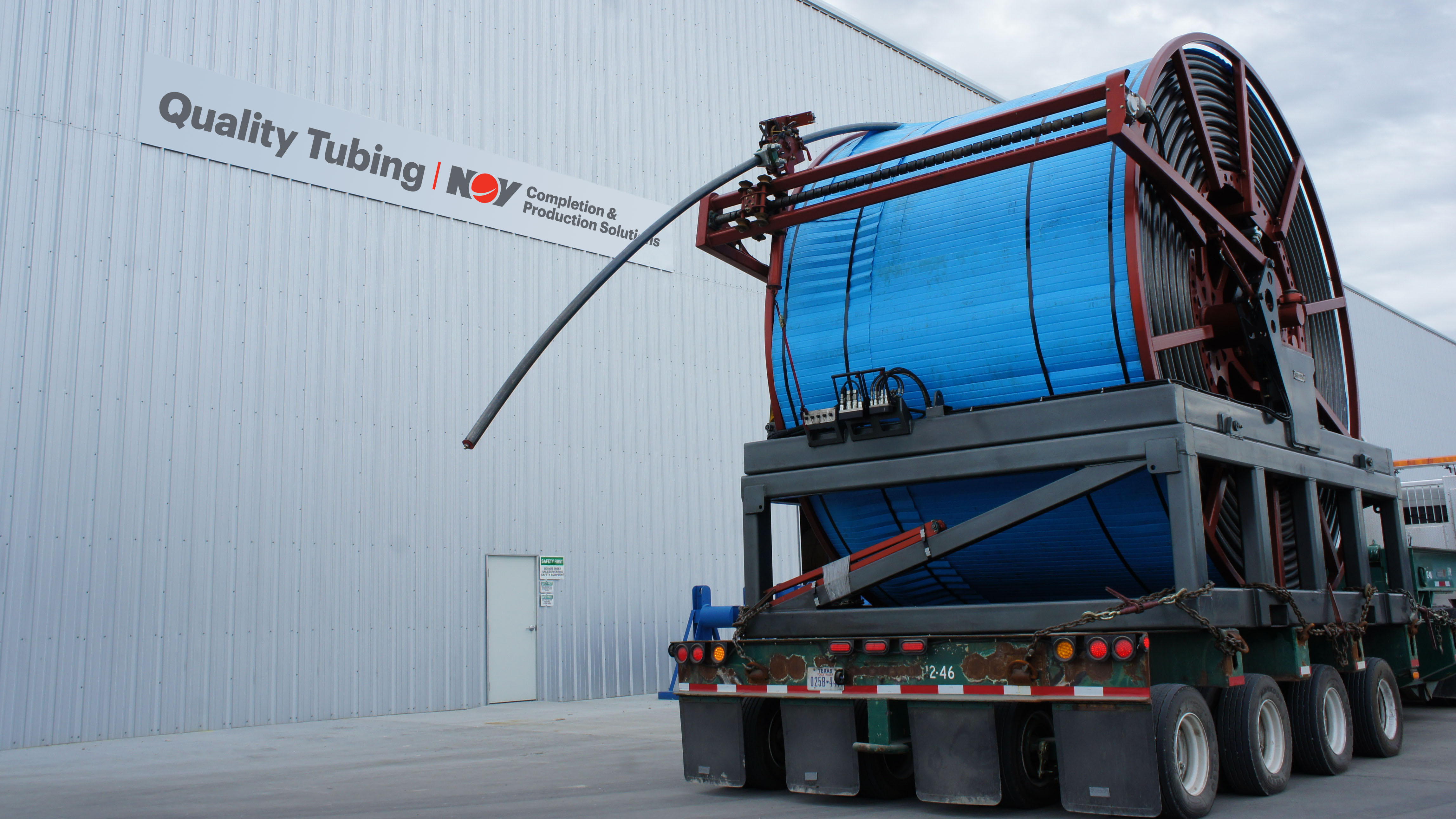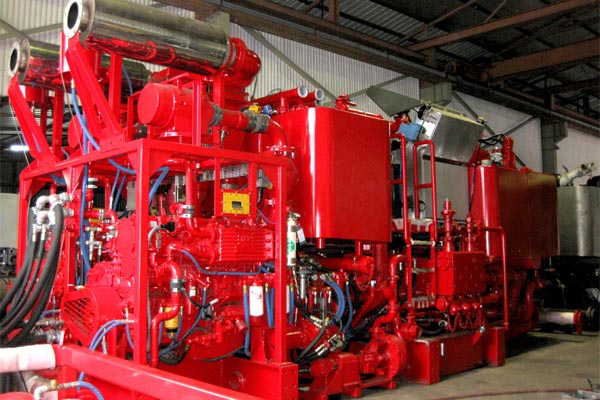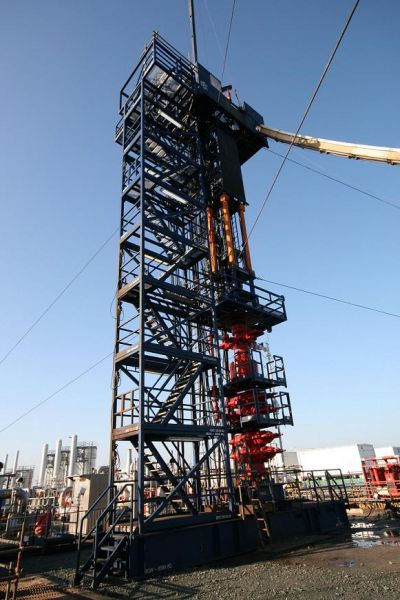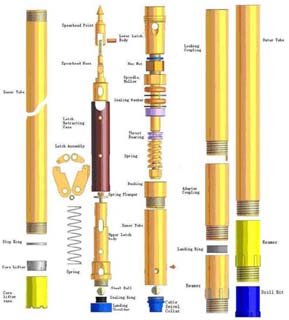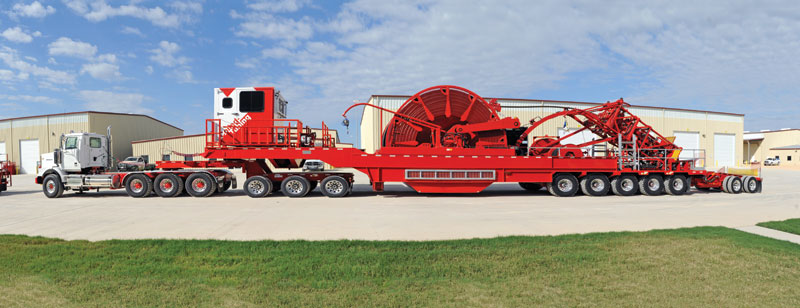Petroleum 101 - Cementing, Surface Completions
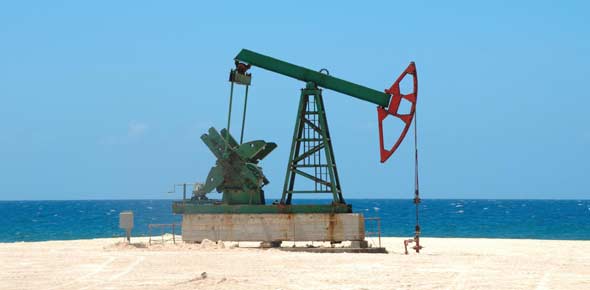
This is a quiz for all those students taking a petroleum course. It basically tests your knowledge on rock cementing and surface completions. It is a good avenue for revision and knowledge advancement.
- 1.
What is the intention of pumping CO2 into the reservoir?
- A.
Kill reservoir
- B.
Decrease production
- C.
Increase pressure to increase production
- D.
Expand reservoir
Correct Answer
C. Increase pressure to increase productionExplanation
Pumping CO2 into the reservoir is done to increase the pressure, which in turn increases production. This is because injecting CO2 into the reservoir helps to push the remaining oil towards the production wells, making it easier to extract. By increasing the pressure, the CO2 acts as a driving force, displacing the oil and improving the overall production from the reservoir.Rate this question:
-
- 2.
What is this?
- A.
Bracket for flare
- B.
Pipe holder
- C.
Casing Centralizer
- D.
Perforator
Correct Answer
C. Casing CentralizerExplanation
A casing centralizer is a device used in oil and gas drilling operations to keep the casing centered in the wellbore. It helps to ensure proper cementing and prevents the casing from getting stuck or damaged during the drilling process. The other options listed, such as bracket for flare, pipe holder, and perforator, do not serve the same purpose as a casing centralizer in drilling operations.Rate this question:
-
- 3.
The advantage of coiled tubing is interventions
- A.
True
- B.
False
Correct Answer
A. TrueExplanation
Coiled tubing offers several advantages for interventions in the oil and gas industry. It is a continuous, flexible pipe that can be spooled onto a reel and easily transported to the wellsite. This eliminates the need for multiple joints and reduces the time and cost associated with rigging up and down. Coiled tubing can be used for various well interventions such as cleanouts, stimulation, logging, and perforating. Its flexibility allows it to navigate through complex wellbore geometries and reach target zones more efficiently. Additionally, coiled tubing operations can be performed live, meaning that production is not interrupted during the intervention.Rate this question:
-
- 4.
How do we ensure cement around casing?
- A.
Reamer
- B.
Centralizer
- C.
Agitator
- D.
Casing Shoe
Correct Answer
B. CentralizerExplanation
To ensure cement around the casing, a centralizer is used. A centralizer is a device that helps keep the casing in the center of the wellbore, allowing for even distribution of cement around the casing. It prevents the casing from touching the wellbore walls, which could lead to uneven cement placement. By using centralizers, the cement can be properly circulated and set around the casing, ensuring a secure and effective wellbore seal.Rate this question:
-
- 5.
Cement is pumped down the annulus?
- A.
True
- B.
False
Correct Answer
B. FalseExplanation
Cement is not pumped down the annulus. Rather, it is pumped down the casing and up through the annulus to fill the space between the casing and the wellbore.Rate this question:
-
- 6.
This is used to push cement down the well
- A.
Top Drive
- B.
Moyno Pump
- C.
Plug
- D.
Coil Tubing
Correct Answer
C. PlugExplanation
A plug is used to push cement down the well during the cementing process. It is a temporary barrier that is inserted into the wellbore to isolate different sections and prevent fluid flow. In this context, the plug would be used to ensure that the cement is pushed down to the desired location in the well, creating a seal and providing support for the wellbore.Rate this question:
-
- 7.
What is this?
- A.
Mud Pump
- B.
Cementing Unit
- C.
Moyno Pump
- D.
Charge Pump
Correct Answer
B. Cementing UnitExplanation
A cementing unit is a machine used in the oil and gas industry to pump cement into wells during well construction or maintenance. It is designed to mix cement and water to create a slurry, which is then pumped down the wellbore and into the annular space between the casing and the formation. This helps to secure the casing in place, prevent fluid migration, and provide zonal isolation. The cementing unit typically consists of pumps, mixers, and control systems to ensure accurate and efficient cementing operations.Rate this question:
-
- 8.
What can snubbing do, that Coil Tubing cant?
- A.
Rotate
- B.
Drill faster
- C.
Produce faster
Correct Answer
A. RotateExplanation
Snubbing can rotate, while coil tubing cannot. Snubbing is a well intervention technique that involves the use of a hydraulic workover unit to push or pull pipe in and out of a wellbore. This allows for the rotation of the pipe, which is useful for tasks such as drilling directional or horizontal wells, or for performing certain completion or workover operations. On the other hand, coil tubing is a continuous string of tubing that is typically used for well interventions, but it does not have the capability to rotate.Rate this question:
-
- 9.
Slickline has no electrical conductor
- A.
True
- B.
False
Correct Answer
A. TrueExplanation
Slickline is a type of wireline used in the oil and gas industry for well intervention and data acquisition. It is typically made of a non-conductive material such as stainless steel. This means that slickline does not have any electrical conductor properties, making the statement "Slickline has no electrical conductor" true.Rate this question:
-
- 10.
Wireline is not used for
- A.
Formation logging
- B.
Perforating
- C.
Production logging
- D.
Fracturing
Correct Answer
C. Production loggingExplanation
Wireline is a method used in the oil and gas industry to lower equipment and tools into a wellbore. It is commonly used for various purposes such as formation logging, perforating, and production logging. However, wireline is not typically used for fracturing operations. Fracturing, also known as hydraulic fracturing or fracking, involves injecting fluids into the well at high pressure to create fractures in the reservoir rock and enhance oil or gas production. This process usually requires specialized equipment and techniques that are different from those used in wireline operations.Rate this question:
-
- 11.
A workover rig or a mobile rig is not used when
- A.
Drilling
- B.
Pulling tubing
- C.
Cement jobs
- D.
CO2 Flooding
Correct Answer
D. CO2 FloodingExplanation
A workover rig or a mobile rig is not used for CO2 flooding because CO2 flooding is a technique used in enhanced oil recovery where carbon dioxide is injected into an oil reservoir to increase oil production. It does not involve drilling, pulling tubing, or cement jobs, which are tasks typically performed by workover rigs or mobile rigs. Instead, CO2 flooding requires specialized equipment and processes specifically designed for injecting and managing carbon dioxide in the reservoir.Rate this question:
-
- 12.
Cementing is done with what over the well
- A.
Fracturing Tree
- B.
Drilling Rig
Correct Answer
B. Drilling RigExplanation
Cementing is a process in oil and gas drilling where cement is pumped into the wellbore to seal the annulus and provide structural support. This is typically done using a drilling rig, which is a large machine used to drill boreholes into the earth's surface. The drilling rig is responsible for creating the wellbore, and once the drilling is complete, cementing is done over the wellbore to ensure proper sealing and stability. Therefore, the correct answer is drilling rig.Rate this question:
-
- 13.
The most common use for Coiled tubing is:
- A.
Cement jobs
- B.
Intervention and completion
- C.
Running Casing
Correct Answer
B. Intervention and completionExplanation
Coiled tubing is commonly used for intervention and completion purposes in the oil and gas industry. It involves the use of a continuous length of pipe, known as coiled tubing, which is inserted into a wellbore to perform various operations such as well cleanouts, stimulation treatments, and wellbore logging. This method is preferred for its flexibility, cost-effectiveness, and ability to reach remote and challenging locations. Unlike traditional methods like workover rigs, coiled tubing can be deployed quickly and efficiently, making it a popular choice for intervention and completion activities.Rate this question:
-
- 14.
When using coil tubing, whatis the name of the unit used to push/pull?
- A.
Injector
- B.
Mud pump
- C.
Charge pump
- D.
Top Drive
Correct Answer
A. InjectorExplanation
The unit used to push/pull when using coil tubing is called an injector. An injector is a device that is used to insert and retrieve the coil tubing into and out of a wellbore. It provides the necessary force to push or pull the tubing, allowing for various operations such as well intervention, stimulation, or production enhancement. The injector is an essential component in coil tubing operations, ensuring the smooth and efficient deployment of the tubing into the wellbore.Rate this question:
-
- 15.
Coiled Tubing is faster or slower than a workover rig?
- A.
Faster
- B.
Slower
- C.
The same
Correct Answer
A. FasterExplanation
Coiled Tubing is faster than a workover rig because it is a continuous tubing system that can be quickly deployed into a wellbore without the need for drilling or pulling out the entire tubing string. It allows for various operations such as well cleanouts, well stimulation, and logging to be performed efficiently and rapidly. On the other hand, a workover rig requires more time and resources to set up, dismantle, and perform the necessary operations, making it slower compared to coiled tubing.Rate this question:
-
- 16.
Why does coiled tubing have a faster rate of penetration than rotary drilling rig?
- A.
Do not need special crew
- B.
Since you have to connect the pipe
- C.
No joined pipe, it is a continous reel
Correct Answer
C. No joined pipe, it is a continous reelExplanation
Coiled tubing has a faster rate of penetration than a rotary drilling rig because it does not require a special crew and it is a continuous reel without any joined pipe. This means that there is no need to connect pipe sections, which saves time and allows for a more efficient drilling process. The continuous reel also allows for smoother and faster operations, resulting in a faster rate of penetration compared to a rotary drilling rig.Rate this question:
-
- 17.
Can you rotate something at bottom of coiled tubing?
- A.
Yes
- B.
No
Correct Answer
A. YesExplanation
Yes, you can rotate something at the bottom of coiled tubing. Coiled tubing is a continuous length of pipe wound on a spool, which is used in various oil and gas operations. It is often used for well intervention activities such as fishing, milling, and drilling. The coiled tubing is flexible and can be rotated using a downhole tool or equipment attached to the bottom end of the tubing. This rotation allows for tasks such as cutting, grinding, or drilling to be performed at the bottom of the wellbore.Rate this question:
-
- 18.
How far is the cement brought up the annulus?
- A.
To the surface
- B.
Min 200-500ft above the shoe
- C.
Half way up the well bore
- D.
Min 800-1000ft above the shoe
Correct Answer
B. Min 200-500ft above the shoeExplanation
The cement is brought up the annulus to a minimum of 200-500ft above the shoe. This means that the cement is pumped into the space between the casing and the wellbore, and it is pushed up to a certain height above the shoe, which is the bottom of the casing. This ensures that the annulus is properly filled with cement, providing a secure seal and preventing any leakage or fluid migration.Rate this question:
-
- 19.
A typical work over rig has:
- A.
Truck mounted derrick
- B.
Truck mounted drawworks
- C.
Low profile mud tank
- D.
All the above
Correct Answer
D. All the aboveExplanation
A typical work over rig includes a truck mounted derrick, which is used to lift and lower equipment during the workover operations. It also includes a truck mounted drawworks, which is responsible for hoisting and lowering the drill string and other tools. Additionally, it has a low profile mud tank, which is used to store and circulate drilling fluid during the workover operations. Therefore, all of the options mentioned above are correct and can be found in a typical work over rig.Rate this question:
-
- 20.
Snubbing is the act of forcing a pipe or tubular into a well against wellbore pressure.
- A.
True
- B.
False
Correct Answer
A. TrueExplanation
The statement accurately defines snubbing as the process of inserting a pipe or tubular into a well while withstanding the pressure from the wellbore. Therefore, the correct answer is true.Rate this question:
-
- 21.
What type of pump is the "heart" in Hydraulic Fracturing Operations?
- A.
High Pressure Centrifugal Pumps
- B.
High Pressure Reciprocating Pumps
- C.
Plunger Pump
- D.
Gear Pump
Correct Answer
B. High Pressure Reciprocating PumpsExplanation
High Pressure Reciprocating Pumps are considered the "heart" in Hydraulic Fracturing Operations because they are capable of generating high pressures required for the fracturing process. These pumps use a reciprocating motion to create pressure by pushing fluid into the system at a high rate. They are designed to handle the high pressures and volumes of fluid required for hydraulic fracturing, making them an essential component in the operation.Rate this question:
-
- 22.
What is not an advantage of using coil tubing?
- A.
Smaller crew
- B.
Better kick detection
- C.
Can circulate large volumes of drilling fluid
- D.
Drill string connections are almost eliminated
Correct Answer
C. Can circulate large volumes of drilling fluidExplanation
The use of coil tubing does not offer the advantage of being able to circulate large volumes of drilling fluid. Coil tubing is a continuous string of tubing that is used in various oil and gas operations, such as well intervention and drilling. It is known for its ability to perform tasks efficiently with a smaller crew, its effectiveness in kick detection, and its capability to eliminate drill string connections. However, it is not designed to circulate large volumes of drilling fluid like other methods or equipment may be able to do.Rate this question:
-
Quiz Review Timeline +
Our quizzes are rigorously reviewed, monitored and continuously updated by our expert board to maintain accuracy, relevance, and timeliness.
-
Current Version
-
Mar 22, 2023Quiz Edited by
ProProfs Editorial Team -
Feb 02, 2015Quiz Created by
Pet101NOV
 Back to top
Back to top



